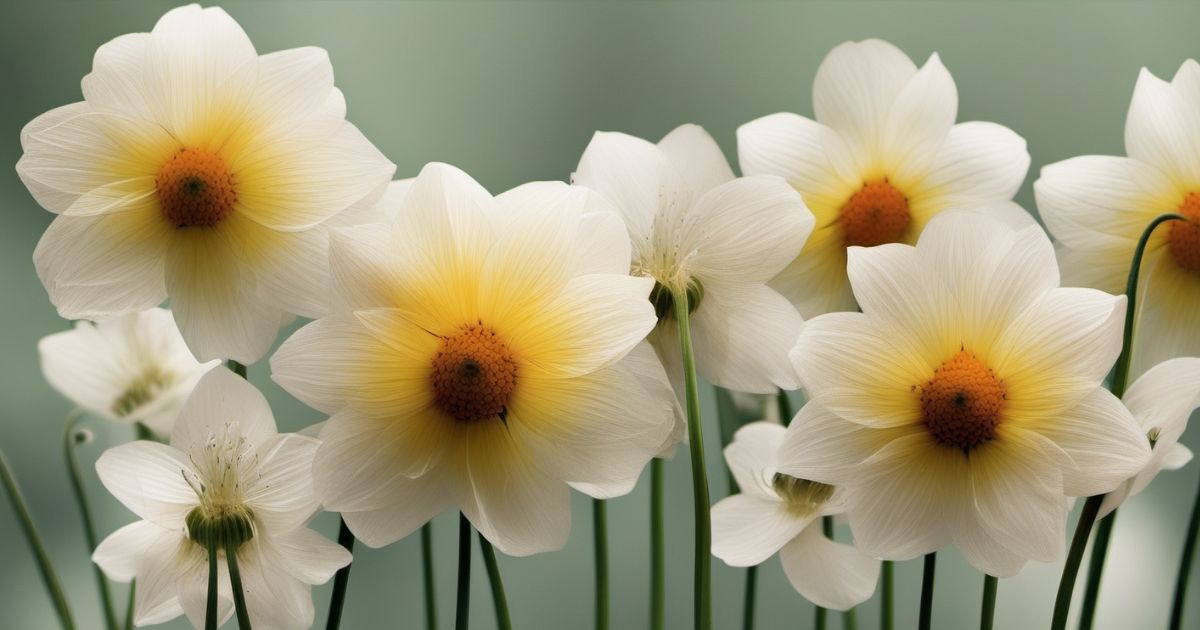Flowers have long been symbols of resilience and strength. Their vibrant colors, healing properties, and ability to bloom even in harsh conditions make them apt representations of power. This article explores 25 flowers that epitomize fortitude, from the delicate yet hardy orchid to the vibrant, determined sunflower.
We’ll examine the historical symbolism behind floral strength, the restorative power of blossoms, and the distinctive resilient attributes of 25 botanicals. Discover how flowers have inspired and uplifted cultures across eras with their subtle yet extraordinary might. These 25 resilient blooms offer glimpses of nature’s phenomenal life force.
History and Tradition: How Flowers Have Represented Strength
For centuries, cultures worldwide have attributed symbolic meanings to flowers, including attributes like courage, determination, hope, and renewal.
Ancient Greeks revered florals like iris for its connection to their goddess of the rainbow. Gladiolus represented strength and moral integrity. Carnations signified fascination, distinction, and divine love. Flowers carried important social messages and figured prominently in myths, religious rituals, traditional remedies, and ancient medicines.
Many Native American tribes recognized the life-giving and restorative aspects of blossoms. They infused plants like echinacea and sage into traditional healing practices. The Victorians developed an intricate language des flores, using arrangements and floral gifts to communicate coded messages lovers dare not speak aloud.
Today floristry continues to draw on these long-standing symbolic associations. By choosing flowers emblematic of specific virtues, we express encouragement, celebration, gratitude, and consolation.
The Healing Power of Floral Strength
In addition to their cultural symbolism, many flowers boast natural phytochemicals that provide genuine healing, health, and protective benefits.
Several possess anti-inflammatory, antimicrobial, and antioxidant properties that reduce infections, decrease pain, speed healing, and support wellness. For example, aloe vera gel soothes skin irritations. Lavender and valerian release stress-busting fragrances. Purple coneflower boosts immunity.
When we give flowers, we pass on nature’s medicinal gifts – symbolic of our care and desire to uplift. We draw on plants’ innate resilience and ability to regenerate while invoking their distinctive emblems of power, luck, wisdom, and fortune.
Let’s explore 25 stunning flowers specially recognized throughout history for representing renewal, restoration, hope, and inner strength through adversity. Discover their unique expressions of resilience reflected in medicinal remedies, captivating fragrances, vibrant hues, and even their very structures.
1. Orchid
With striking, delicate blooms belying exceptional strength, orchids symbolize luxury, love, beauty, and charm. On the Chinese calendar, orchids represent April, refinement, and integrity.
These exotic epiphytes grow on trees extracting moisture and nutrients from the air. Their atypical root systems adapt to a wide variety of habitats from rainforests to deserts. Orchids’ unusual resilience lets unique varieties flourish around the world.
The elegant cattleya orchid specifically signifies mature charm and strength during adversity. Its large ruffled petals come in a diverse palette with hybrids exhibiting tropical colors like intense yellows, pinks, purples, oranges, and red.
2. Daffodil
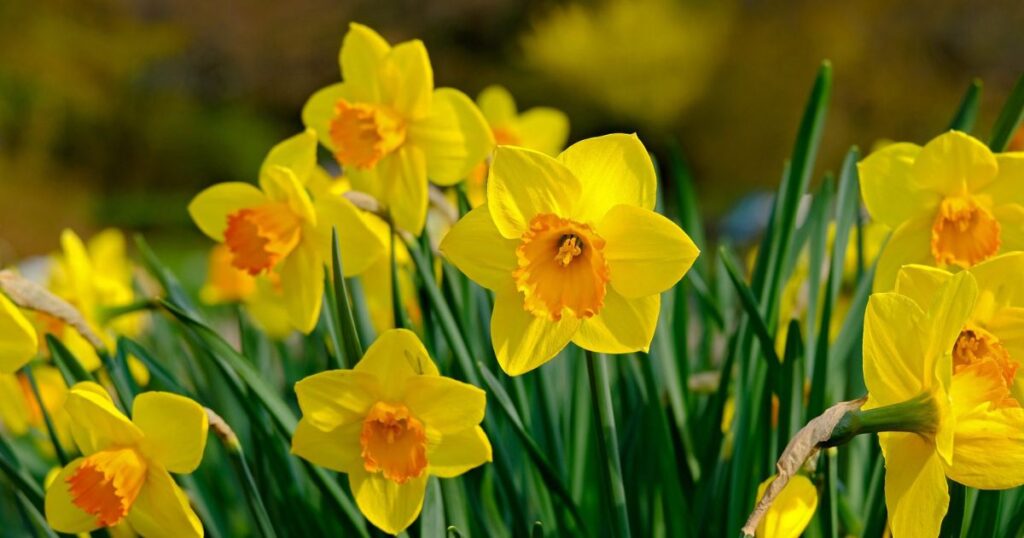
Cheery spring daffodils embody renewal and rebirth with their sunny charm and ability to return year after year. These hardy trumpets bloom early, even pushing through late winter’s snow.
Daffodils’ association with new beginnings comes from their perennial nature – they form hardy bulbs that withstand cold weather to re-emerge each spring. Gift daffodils to inspire renewed hope during difficult times.
These golden blossoms also represent overcoming adversity in the Victorian-era language of flowers. Today the daffodil remains an icon of the American Cancer Society’s annual spring campaign to raise awareness and funding for cancer programs.
3. Poppy
Papery single-petal poppies bloom joyfully in fiery shades of silky red, orange, yellow, and pink every summer. As bold symbols of pleasure, poppies also signify consolation, success, and extravagant enjoyment of life.
Poppies reassuringly reseed themselves, blanketing fields annually with cheery wildflowers. After bursting into bloom, poppies shed their delicate petals to the wind almost as quickly – reminding us to appreciate beauty’s fleeting nature.
California named the golden poppy its state flower. Red poppies became emblems of fallen World War I soldiers shedding their blood defending freedom in Europe’s fields. Today poppies carry remembrance, optimism, and hope.
4. African Violet
In the language of flowers, African violets represent spirituality. With heart-shaped leaves flourishing from deep purple stems, African violets bloom modestly in a palette of purples, blues, and whites.
These darling houseplants favor bright, indirect sunlight and cooler night temperatures – thriving on windowsills when other plants fail. Their heartening flowers keep thriving even indoors all year long.
Saintpaulia, named after a German baron studying East African flora in the 1890s, proves tenaciously adaptable. These violets symbolize spiritual strength and faithfulness. Give one to inspire a loved one sensing divine guidance during trials.
5. Geranium
Often confused with brighter red pelargoniums, hardy cranesbill geraniums bloom modestly in hues from lilac-pink to violet-blue. They earned the name cranesbill from their distinctive long, pointed seed capsules. Beyond their charm and elegance, geraniums boast a rich history of resilience and healing.
Since ancient times, cultures worldwide used geraniums medicinally to treat ailments like ulcers and hemorrhoids. Today geranium essential oils help heal cuts, bruises, burns, and inflammation. Tea made from leaves and stems acts as an antiseptic.
Give geraniums as meaningful symbols for anticipated healing, comfort during grief, or encouragement recovering from life’s setbacks.
6. Carnation
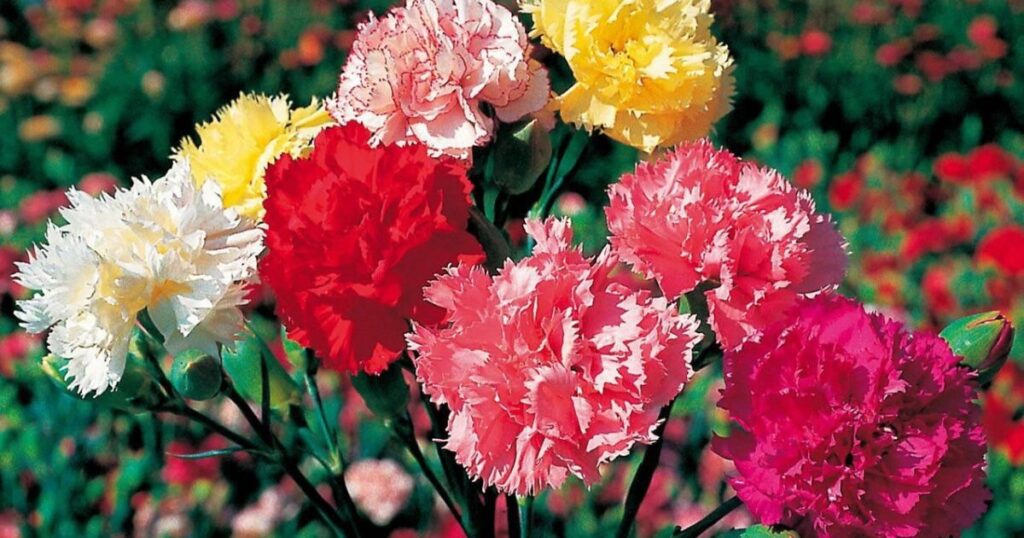
Carnations, rich with lore and tradition, represent fascination, distinction, and an enduring love that survives all challenges. Their clove-like scent is sweet and memorable.
Ruffled carnation blooms sport edging that makes them appear bursting with love and pride. These cottage garden classics bloom joyfully in a spectrum of rainbow hues from white and blush pink to coral, crimson, purple, and cobalt blue shot through with captivating stripes and variegations.
In one Christian legend, carnations first grew from the Virgin Mary’s tears – making them an emblem of abiding love and sacrifice through suffering. Give striped carnations to inspire someone persevering through distress.
7. Peony
Named for Paeon, the mythic Greek physician of the gods, garden peonies embody healing. Associated with prosperity, honor, and female power, peonies make lush, romantic statements in wedding bouquets and centerpieces.
These blossoms bloom extravagantly in late spring and early summer, showcasing the largest and most ostentatious flowers in the plant kingdom. Petals burst forth energetically in hues of creamy white, blush, shell pink, classic red, and deep magenta sometimes tipped vibrant yellow.
Tree peonies uniquely fuse woody stems with the outsized pomp of herbaceous blooms for even showier displays. Peonies represent healing and harness regeneration to live up to 100 years. Give one to cheer a friend recovering their strength.
8. Gladiolus
Sometimes called sword lilies, gladiolus flowers bloom proudly on tall, slim stems like raised swords. These stately columnar flowers represent preparedness, infatuation, and a heart armed for amorous conquests with their sword-shaped vertical spikes.
Gladioli attract attention, making impressive table arrangements and uplifting gifts. Blooms appear in a vibrant spectrum of jewel tones from crimson to cream, orange, pink, gold, plum, butter yellow and tomato red, sometimes streaked, dotted, or edged contrasting hues.
Give them to convey sincere emotions, strength of character, honor, and moral integrity. Used the Victorian era to declare one was armed for battle yet preferred non-violence, gladioli still say, “Prepare to fall in love.”
9. Lavender
The sweet, soothing scent of aromatic lavender calms nerves and induces relaxation. For centuries people cultivated lavender for its medicinal, cosmetic, decorative, and magical properties.
English lavender and French lavender appeal equally to bees, butterflies, gardeners, cooks, and artisans. Use therapeutic lavender oils to perfume linens and home accents while chasing away stress.
Beyond its nostalgic fragrance, lavender flowers embody purity, grace, femininity, and resilience. Give lavender wands or bouquets to inspire strength facing adversity during challenging transitions.
10. Hydrangea
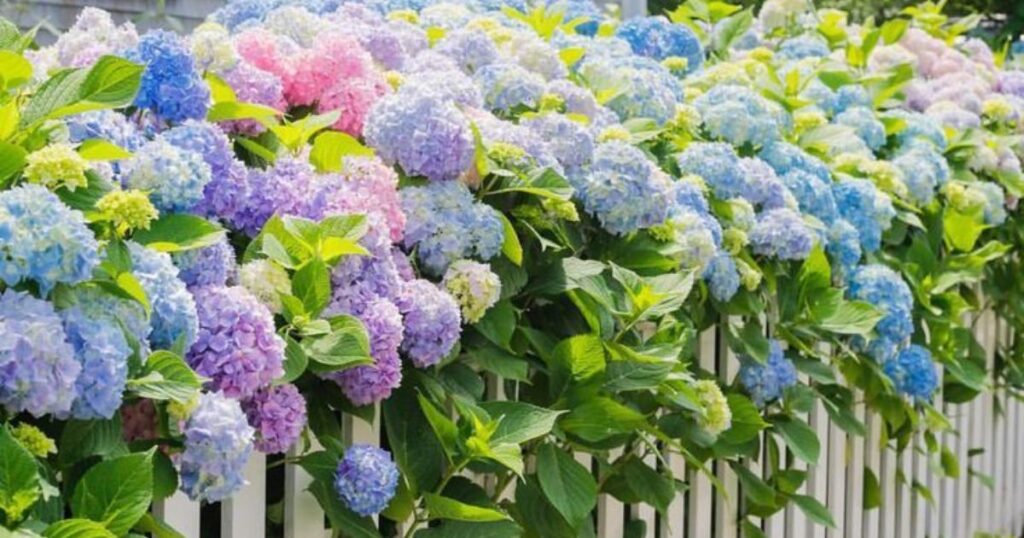
The bold pom-pom blooms of hydrangea offer rich visual texture while representing gratitude for being understood. Gifting hydrangeas conveys heartfelt thankfulness.
Hydrangeas bloom in clustered round flowerheads called corymbs. Colors shift hydrangeas from iconic sky blue to deep purple or pink indicating soil pH levels. Give blue hydrangeas of sincere appreciation. Pink or red say “You are beautiful inside and out.” White signifies deep gratitude.
The flowers’ Greek name hydrangea, meaning water vessel, refers to early use as pottery decorations. Hydrangeas prove remarkably adaptive flowering throughout four seasons in an array of sizes, shapes, and colors.
11. Snapdragon
Snapdragon’s delicate dragon-shaped flowers represent grace, strength, deviousness, and fascinating conversation. Their fanciful form inspired common names like lions’ mouths, rabbits’ mouths, calves’ snouts, and toadflax.
Give a bouquet of snapdragons to inspire clever optimism handling life’s intricate difficulties with imaginative solutions. Combining beauty and wit, snapdragons add playful charm and a touch of influence to arrangements.
These hardy blossoms return reliably in early summer and bloom steadily in vivid sunset hues of classic yellow, white, pink, bronze, red, and lilac. Snapdragons earned their reputation for versatility and resilience.
12. Black-Eyed Susan
Colorful black-eyed Susans spread golden summer sunshine with their glowingly optimistic faces. These wildflowers bloom brightly year after year, nourishing bees and delighting gardeners.
Associated with the sun’s burning vibrancy and life energy, you’ll find black-eyed Susans charming roadsides all summer long with their warm, persevering radiance. Give them to inspire cheerfully rising after adversity strikes.
Flourishing in poor, dry soils, these resilient Rudbeckia wink radiantly with their dark brown central eye surrounded by haloed yellow triangular petals. They multi-task beautifully as cut flowers or landscape plants – spreading glowing warmth.
13. Aloe Vera
Aloe vera plants store water in their stiff dagger-shaped leaves to endure arid conditions. This adaptability allows them to soothe and heal wounds. Contents from leaves treat skin irritations, burns, itches, scrapes, and pains topically.
Egyptians dubbed aloe the “Plant of Immortality.” Native Americans called it the “Wand of Heaven.” Chinese traditional medicine relied on it to boost chi, balance yin and yang. Victorian ladies prized it as a beauty enhancer.
Keep an aloe vera plant handy to apply its juices directly whenever skin needs repair. It represents the adaptability and toughness needed to heal life’s emotional and physical wounds.
14. Zinnia
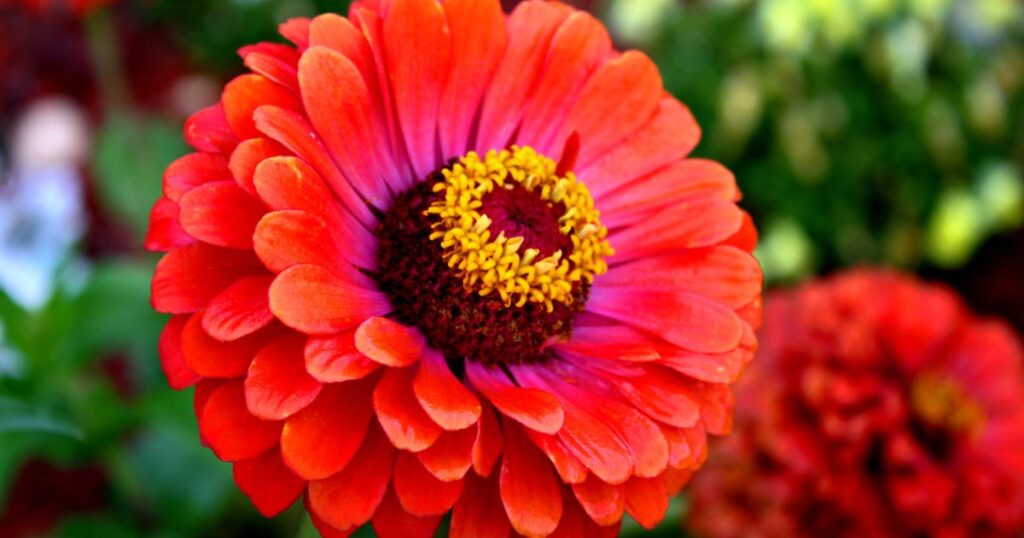
Vibrant ruffled zinnia blooms inspire smiling positivity while representing steady endurance. These stalwart annuals withstand summer heat waves to produce abundant flowers all season long into fall frost – especially with regular deadheading.
Zinnias charm bees, butterflies, and flower lovers. Give zinnia bouquets to uplift friends persevering through difficult circumstances with steadfast courage.
With bright flowers boasting every shade but blue, zinnias flaunt hues from traditional red, pink, orange, purple and yellow to lime green, salmon, scarlet, cream and cherry. These easy blossoms symbolize the everyday heroism of holding one’s head high through trying times.
15. Echinacea (Purple Coneflower)
Echinacea’s revelatory power lies in its roots and stems rather than flashy blooms. Called purple coneflower for its prickly pink-hued center, this medicinal plant bolsters immunity to help fight illness.
Once sacred to many Native American cultures, echinacea continues showing remarkable adaptability and resilience. As easy to grow as a dandelion, each sturdy rosette of leaves births tall daisy-like flowers summer through fall.
Gift echinacea to inspire natural defenses rallying strength against maladies from flus to melancholia. Let it remind loved ones that wellness often starts from within.
16. Columbine
Delicate yet hardy columbine flowers represent the sweetness of resolved sorrow. Nodding gracefully, their red and yellow blooms mingle charmingly with their leafy greens. Give columbines to symbolize the hope and gradual lifting of burdens allowing happiness to cautiously bloom again.
Legend says columbine sprouted from the foamy sweat of Pegasus created when Bellerophon rode the winged horse heroically into battle. Named Aquilegia for an eagle, columbine does resemble a bird in flight. Gifting it suggests lofty aspirations lifting weary spirits higher.
17. Valerian
Unshowy umbrella-shaped clusters of tiny valerian flowers, including the fragrant QUINCE blossoms, exude an evocative scent. Sometimes called “garden heliotrope,” its vanilla-like perfume intensifies at night, earning another nickname: “flower that smells like summer.”
For centuries people recognized valerian’s power to reduce anxiety, alleviate sleep disorders, calm restlessness, and relieve stomach distress. Its name comes from the Latin “to be strong” indicating healers prescribed it as a talisman for strength facing adversity.
Keep fragrant valerian by the bedside for its medicinal benefits along with its symbolic ability soothe everyday worries. When times seem dark, valerian inspires tranquility with its uplifting aroma and meaning.
18. Cactus
Resilient cactus plants represent warmth, protection, durability, and adaptability surviving the harshest desert environments. Tribal lore tells of protective cactus spirits. The Chinese symbol for perseverance includes the cactus.
With thorny stems for storing water, these iconic succulents stand as metaphors for drawing on inner reserves, safeguarding vulnerability.
Jade plants specifically represent prosperity and luck. Tall, branching arms produce thick clusters of round succulent leaves. Easy to grow indoors, just mind the thorns and give them plenty of light.
19. Phacelia
Phacelia’s dense clusters of tiny bell-like blossoms hum with bees. These hardy wildflowers thrive in poor soils, attracting beneficial insects with appealing nectar and charming lavender-blue frilly flowers.
Give phacelia seeds and bouquets to foster friendships and signify renewing depleted reserves – encouraging perseverance. Let phacelia, aptly nicknamed “bee’s friend,” inspire us to bravely forage outside our comfort zones for connections sweetening our world.
20. Allium
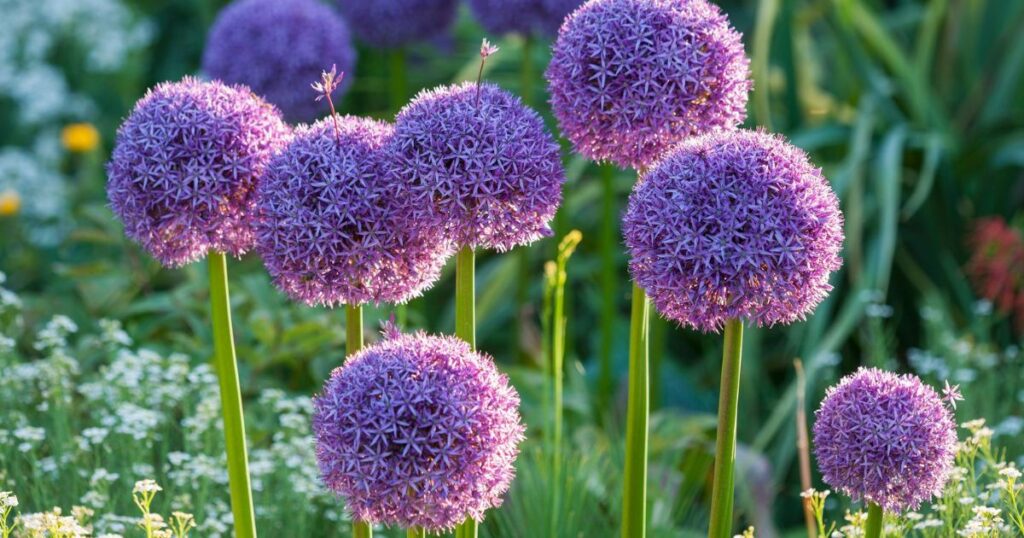
Revealing resilience and unity, allium flowers like stately ornamental onions exude spectacular spherical bursts denoting the shape of the universe and cycles of life, death and rebirth in Buddhism. Alliums represent eternity.
Long-lasting puffball alliums unfurl dramatically from slender curving stems in hues from silvery amethyst to rosy grape. They spread whimsical merriment mixed with serious flowers. Give giant alliums standing over two feet tall to uplift spirits weathering life’s most sobering seasons.
21. Amsonia (Sage)
Sometimes called bluestar flower, willowleaf bluestar, or blue sage starflower, airy steel-blue amsonia blooms brighten sunny meadows all summer. These pretty perennials prove adaptable to poor soils, extreme weather, droughts and woodland shade.
Beyond their floral beauty, amsonia leaves boast health-protective antioxidants traditionally used as anti-inflammatories and antibiotics. Humble amsonia builds soil nutrients serving community needs. Give blue stars rather than sage advice to leaders persevering for the greater good.
22. Astrantia (Masterwort)
Astrantia’s open white-green pincushion flowers present an artistic burst of tiny florets within papery bracts. Blooming from early summer into autumn light, these beauties attract butterflies and praise for their elegantly long-lasting bouquets. With leaves curiously wrapped at the base, they represent the sweetness of good memories helping us through grief.
23. Potentilla (Cinquefoil)
Charming cinquefoil flowers feature five leafy bright yellow petals representing the five fingers of divine favor and assistance – including luck, money, health, friends, and wisdom. Sometimes called five-finger grass for their quintuplet leaves, potentillas prove hardy groundcover blanketing alpine meadows and home gardens. Give them to signify rallying inner pluck and untapped personal power for overcoming difficult straits.
24. Iris
The iris earned its name from the ancient Greek goddess Iris known for uniting heaven and earth as the graceful messenger who traveled by rainbow across realms. These flowers represent cherished friendship, wisdom, hope and valor with their elegant, intricate petals.
Irises charmed Van Gogh and Monet as esteemed artists painted their striking forms in iconic works. Bearded irises specifically denote strength of character and emboldened femininity.
25. Sunflower
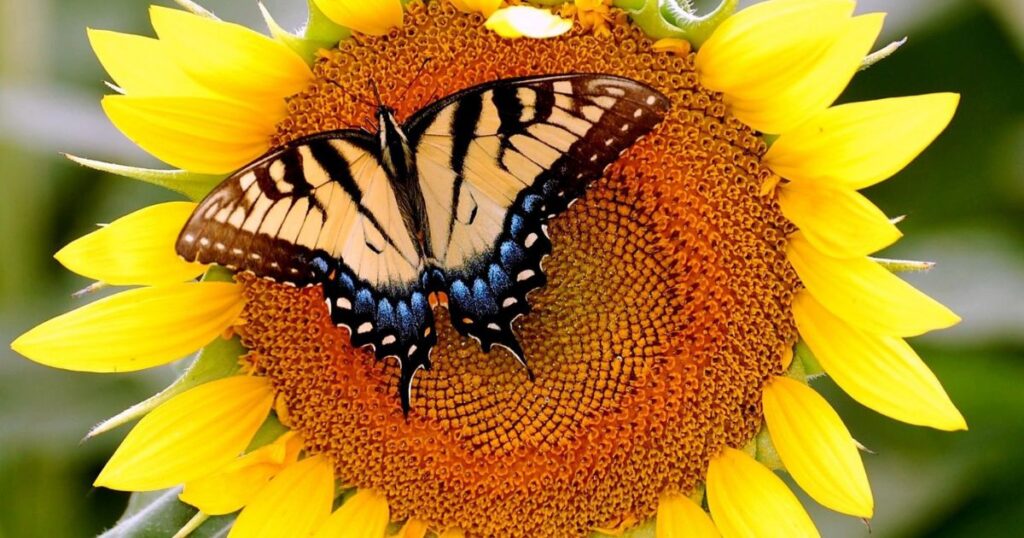
Sunflowers symbolize loyalty, longevity, happiness, and fruitfulness. Their namesake broad golden flower heads follow the sun’s daily journey from east to west. Sunflowers grow bountifully to staggering 9-12 feet tall as cutting flowers and tasty snacks. They represent harvesting nature’s radiant blessings.
Give sunflowers to convey a heart overflowing with love and spiritual zeal. Associated with sunshine, gold, harvests, and truth, sunflowers turn their heads to face the light – modeling resilience. They inspire us to stand tall even through storms while spreading seeds of joy.
A Multifaceted Perspective: Flowers and Their Resilient Meanings
The rich heritage of floral meanings across cultures and eras reminds us of humans’ timeless appreciation for nature’s resilience reflected through blooms. Flowery symbols let us give cherished traditional messages and invoke potent attributes manifesting as aromatic, colorful petals.
When we gift blossoms, we share nature’s diverse medicinal and ethereal powers – passed down ritualistically for generations. We exchange encouragement and luck. We comfort, celebrate and console. We draw on perseverance embodied in florals’ very structures from their clinging-vine habits to their thorny stems storing precious water.
May these 25 resilient flowers continue providing uplifting metaphors, healing remedies and profound aesthetic inspiration while spreading beauty and hope.
Final thought
Flowers represent nature’s astonishing life force, vigor, and renewal. Their bright effervescence suggests hopeful light enduring darkest adversity.
Resilient blossoms rise cyclically to spread beauty and vigor – exerting graceful strength. Their striking shapes, compelling fragrances, and vibrant hues remind us of the earth’s profound beauty which ultimately gives humanity sustenance.
These 25 floral emblems signify nature’s diverse expressions of tenacious triumph. Let them inspire us with their cheery positivity and gentle might to nurture our seeds of potential however we bloom.
May their distinctive promise of renewal and awakening – defying even death itself – uplift humanity to sow more beauty in every season of life’s bittersweet journey from fragile seed to full flower.
